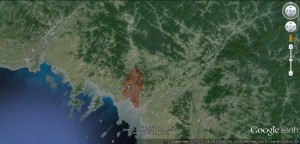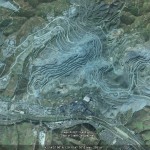Institute for Far Eastern Studies (IFES)
North Korean website DPRK Today recently lauded the copious amounts of over 500 types of quality mineral reserves in North Korea including iron ore, anthracite, bituminous coal, gold, silver, and copper. This news appeared amidst the discussions about expanding international sanctions on North Korea’s mineral exports after the fourth nuclear test.
An article titled “Choson from the Geological Perspective,” written by Dr. Choe Won Jong, researcher at the Institute of Geology of the National Academy of Sciences, was posted on the DPRK Today website on February 18.
According to Dr. Choe, North Korea has rich mineral reserves with over 500 types of minerals including billions of tons of iron ore, coal, bituminous coal, silver, copper, lead, zinc, tungsten, magnesite, graphite, and limestone. Reportedly six rare minerals including holdongsok, suansok, and sangpaldongsok were first detected in North Korea and aptly named after the regions where the discoveries were made.
Dr. Choe commented, “The reason that the Republic [DPRK] has a wealth of natural resources is likely to be influenced by the long history and diversity of crustal movement over time. . . . the earth of our country has a long history of more than 3.6 billion years.”
It was said that most of the graphite deposits were formed about 2.5 billion years ago and Ryongyang and Taehung magnesite deposits, Komdok lead-zinc deposits, and Tanchon-Hochon region non-ferrous metal deposits were formed 2 billion years ago. It reported that there are high quality diatomite deposits in Taehongdan County, formed when the pumice of Mount Paektu erupted about 1,000 years ago.
According to Choe, in geological terms, these underground resources were formed as the crust structure of the Korean peninsula is positioned in the eastern outskirts of the Eurasian continental crust as it abuts against the Pacific oceanic crust in the west.
He further explained that there were at least ten big crustal movements surrounding the Korean peninsula, and over 16 periods of magmatism that occurred in North Korea which led to massive granite formation over the years and at this occurrence, non-ferrous metals such as gold, copper, tungsten, and molybdenum, as well as rare metals and rare earth metal deposits were formed.
Non-metallic deposits and copper, iron metal deposits such as graphite, muscovite, feldspar were formed during over seven periods of metamorphism, which reportedly also improved the quality of already existing iron ore and magnesite deposits. From the northeast region that stretches from Mount Paektu to Kilju-gun, all the way to Pukchong-gun to Samsu-gun in the northwest of Machonryong Range, a famous deposit formation region can be found that is said to be rich in magnesite, lead, zinc, copper, gold, iron, and other minerals.
Dr. Choe boasted, “Truly, Machonryong Range can be seen as a great treasure chest in the Korean peninsula . . . . our country has become more and more abundant in underground resources as we are surrounded by the sea on three sides. However, gems must be polished to shine,” and thus he emphasized the need for the development and utilization of these resources.


